Glossary
Examples of 17th Century Kitchen Items
Bread Grater
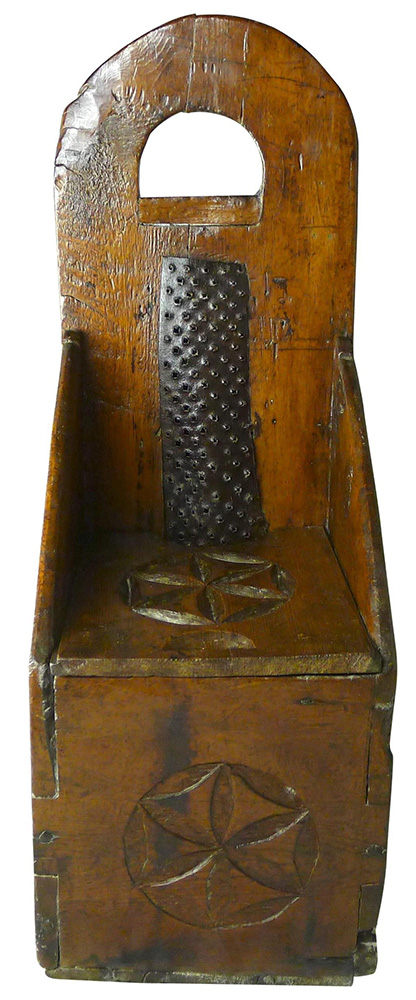
Chafing Dish
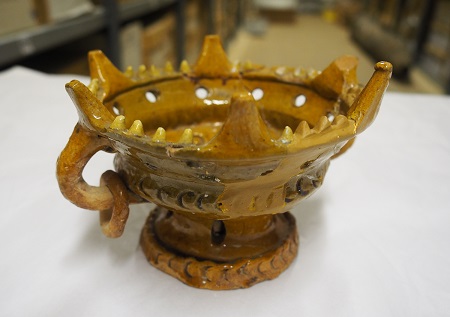
This particular pot is a chafing dish,
a portable vessel which was designed to take hot coals or charcoal and was used for the preparation of foods that needed to be kept warm or cooked gently at the table.
Metal chafing dishes are also known such as one found in a chest on the wreck of the Mary Rose, used by a barber-surgeon for heating up irons, pitch or wax.
Chargers
Platters of Dishes made of pewter (left dated 1740) (right dated 1760-1798)
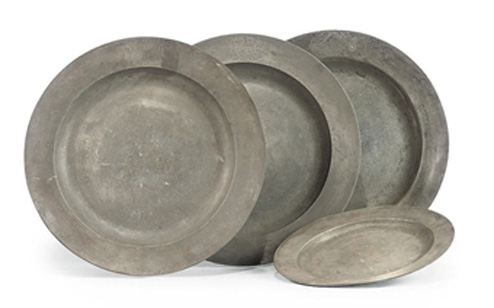
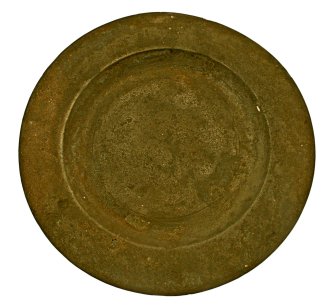
Crook
A 'Crook' ( crock crocke or Crock) later simply called 'hook'. It was used to suspend a cooking pot or kettle at the desired height above the fire.
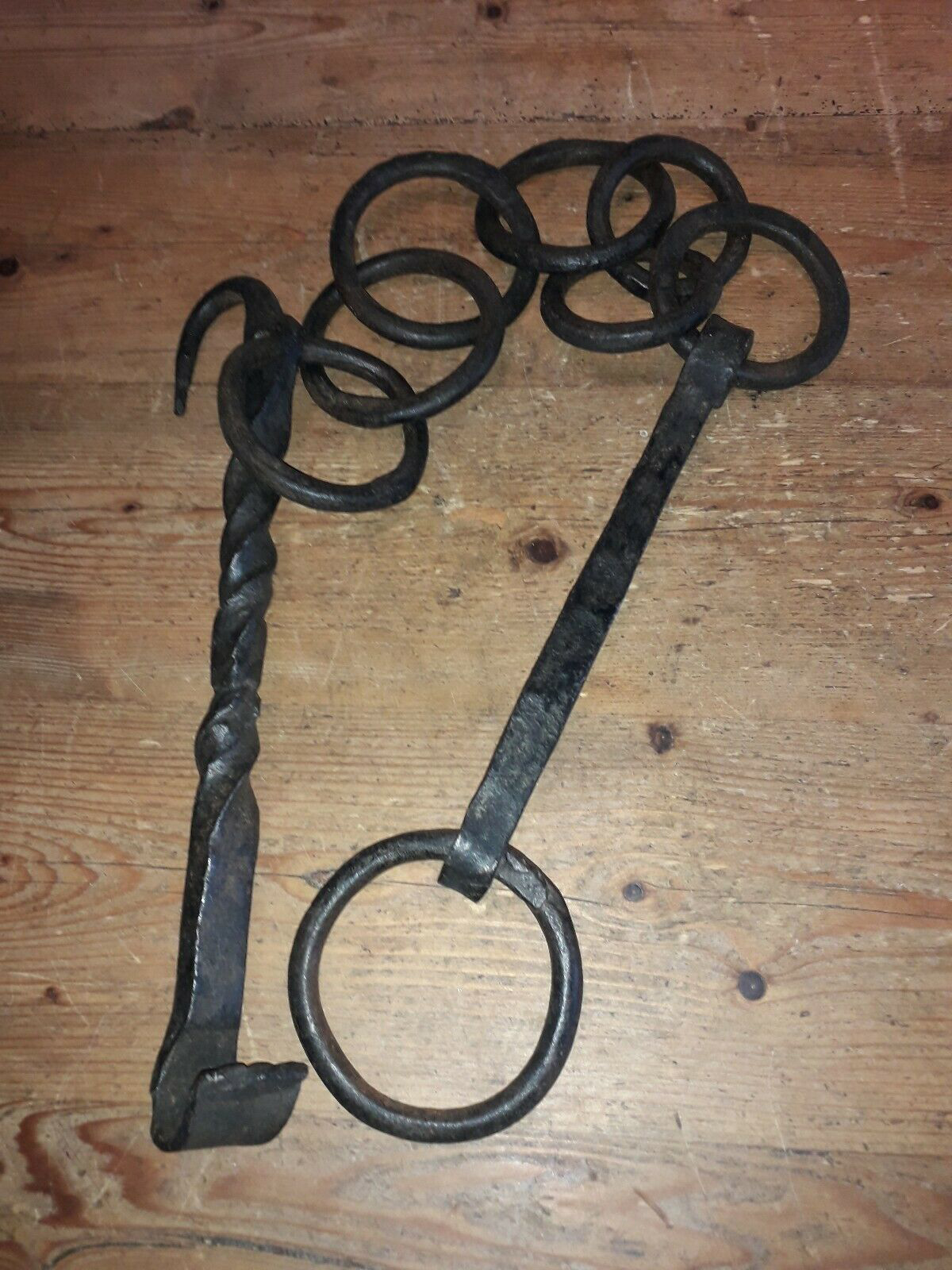
Pottinger (Porringer)
A pottinger is an earlier form of porringer or small basin from which broth, soup or porridge (pottage) was eaten; often with one or two flat handles.
Most 17th century Dorchester inventories do not state what they were made of, but I have seen several which specify pewter.
They could be made of other metals as below but the poorer classes would have had pottingers made of wood.
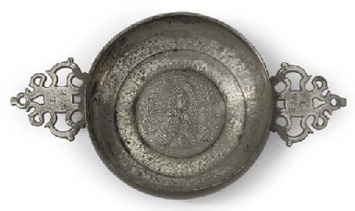
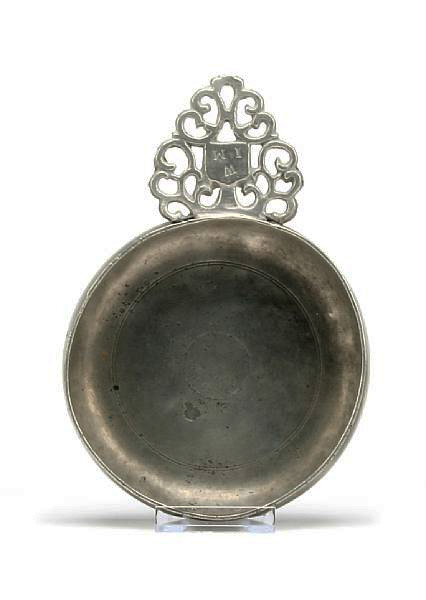
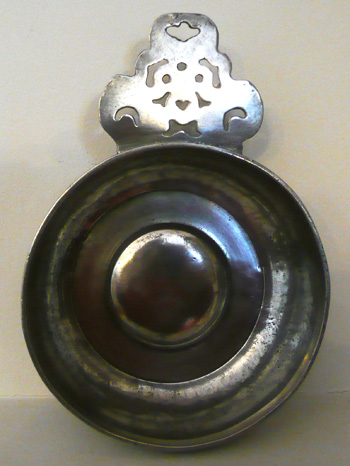
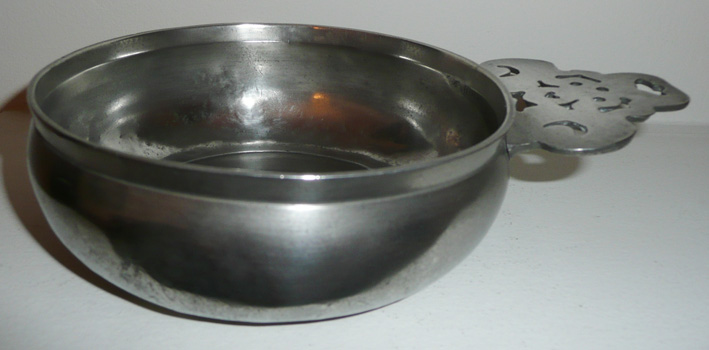
17th Century Porringers: First dated 1695 Pewter; 2nd dated 1690 Pewter.
Salt
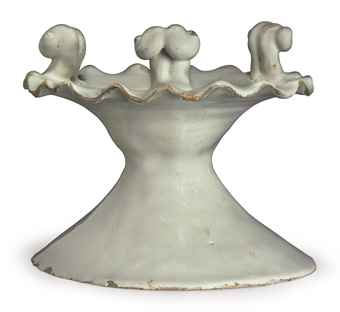
A London Delft 17th Century Salt
Link to The History of Salt at the National Archives
Saucer
Where itemised on their own in 17th century inventories saucers were generally dishes or shallow bowls for eating food from
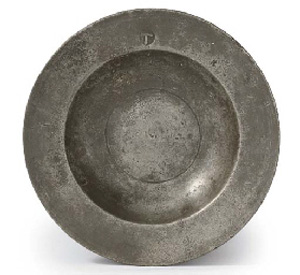
Example of an early Saucer possibly circa 1400
Skillet
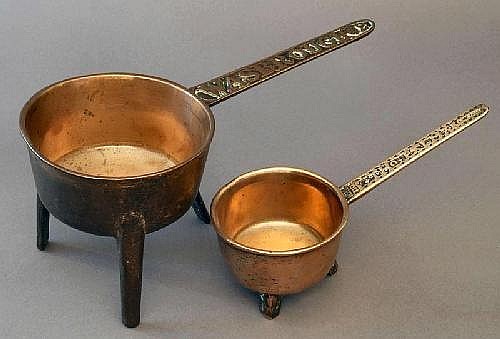
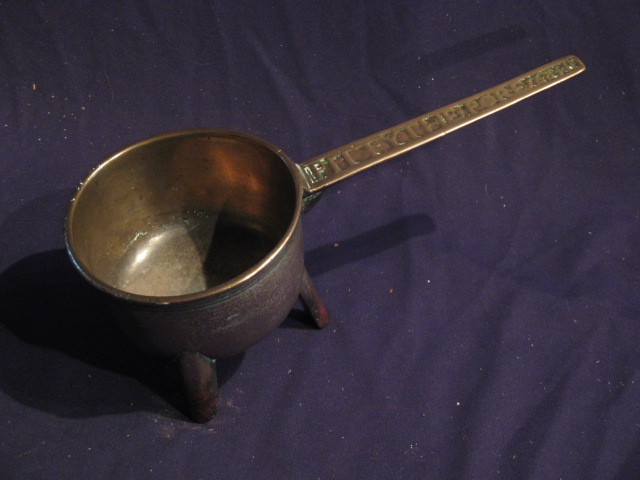
Left: A 17th Century bellmetal skillet by Thomas Palmar of Canterbury, on three short stump feet, the skillet 4.5ins diameter, 10ins overall
Right: 17th Century bronze skillet dated 1684
believed to have been made by John fathers of Montecute Somerset
Skimmers
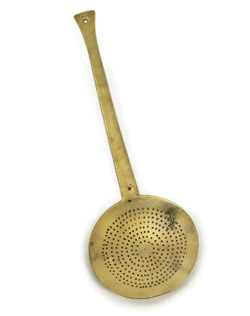
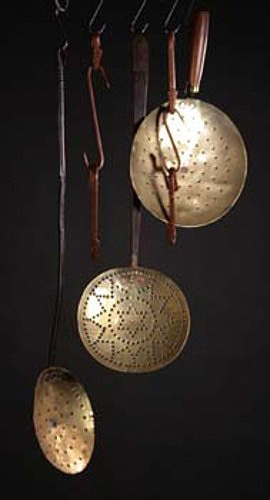
Left: a late 17th century brass skimmer 26" long worth £225 in 2008 - Right: Three Brass Skimmers & Six Copper S-form Hooks of various size: A rare 17th century brass skimmer, the long iron handle cast 'JOHN' beneath the hooked top, the circular brass skimming pierced with holes & ringed decoration 29 ins (74 cms) in length. An 18th Century Pierced Brass Skimmer pierced with star motifs and having an iron handle 24 ins (61 cms) and 30 ins (76 cms) high. A 19th century brass skimmer with a short wooden handle 15 ins (38 cms) long, 9 ins (23 cms) in diameter. [9]*
Estimate: £100.00 - £200.00 in 2010
Tankards & Quarts
In general use were Mugs, Jugs or Tankards. Tankards, differ from mugs in being lidded, and were made in vast numbers from 1660 - 1780.
As taste turned from ale to wine and spirits, tankards began to lose their popularity. Early tankards are straight-sided and late 17th-century examples are sometimes chased or decorated.
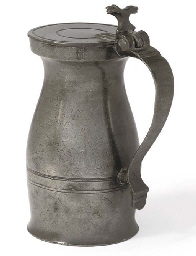
Quart dated 1698
Trencher
Flat plate made of wood on which food was served. Some were square with a small depression at one corner for salt; others were round, and some were stained or painted.)
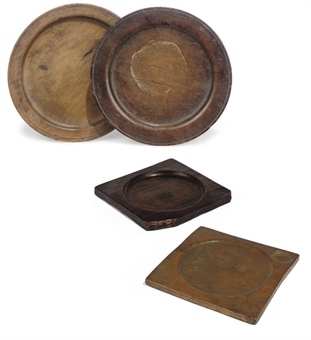
17th Century flat sycamore Trencher (front)
with salt depression
Beechwood Trencher (centre) & two George III sycamore plates each 8¾ in. (22 cm.) diameter at top

















